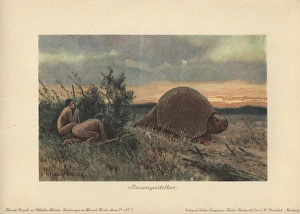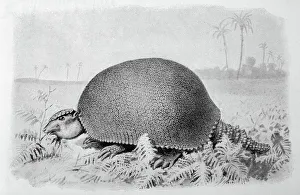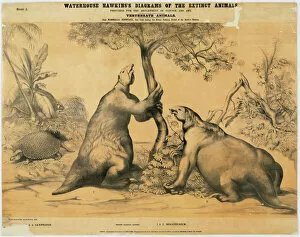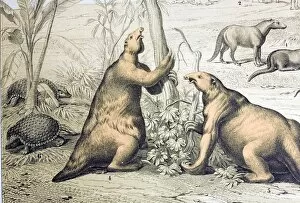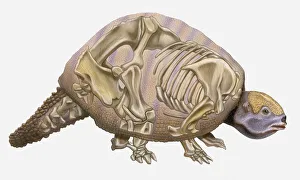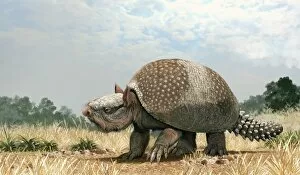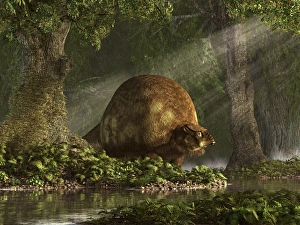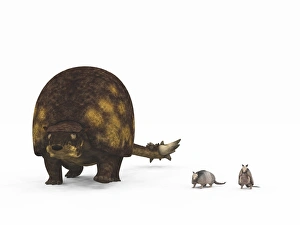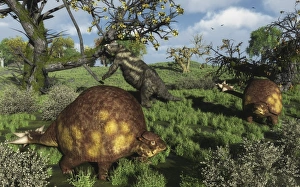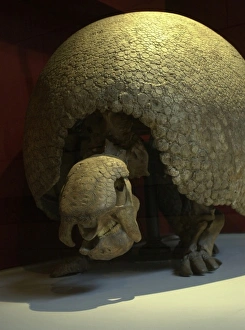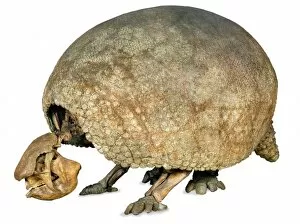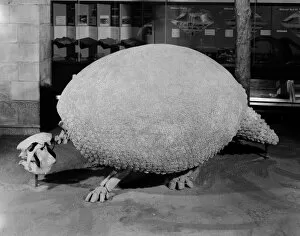Glyptodon Collection
Glyptodon: Majestic Giants of the Prehistoric Plains In a time long ago, primitive men armed with spears embarked on an arduous hunt
All Professionally Made to Order for Quick Shipping
Glyptodon: Majestic Giants of the Prehistoric Plains In a time long ago, primitive men armed with spears embarked on an arduous hunt. Their target? The mighty Glyptodon Asper, a colossal creature that roamed the earth during the Pleistocene epoch. This engraving captures the intensity and bravery required to face such a formidable opponent. The Glyptodon was not alone in this prehistoric world; it shared its habitat with other magnificent creatures like Megatherium. These ancient animals coexisted, creating a mesmerizing scene that has been etched into history. An anatomical illustration reveals the intricate details of this Pleistocene Edentate - Glyptodon reticulatus. Its massive size and unique armor-like shell made it impervious to most predators, including North American megafauna like Glyptotherium arizonae. By the edge of a serene stream stands a large Glyptodon, contemplating its next move. Its presence is awe-inspiring as it reminds us of an era when these gentle giants ruled over grassy plains and flourished alongside their fellow inhabitants. Comparisons between Doedicurus glyptodonts and modern armadillos highlight just how extraordinary these creatures were. Their sheer size dwarfed their contemporary relatives, leaving us astounded by their evolution throughout time. Prehistoric glyptodonts peacefully grazed upon vast grassy plains while Eremotherium observed from afar. This harmonious existence showcases nature's delicate balance during an era we can only imagine through fossils and scientific discoveries. These immense mammals are now forever engraved in our minds as symbols of strength and resilience from an ancient past. They remind us that life has always found ways to adapt and thrive amidst changing landscapes. So let us marvel at the grandeur of these Pleistocene giants - for they have left behind imprints on our planet that will continue to captivate and inspire generations to come.

